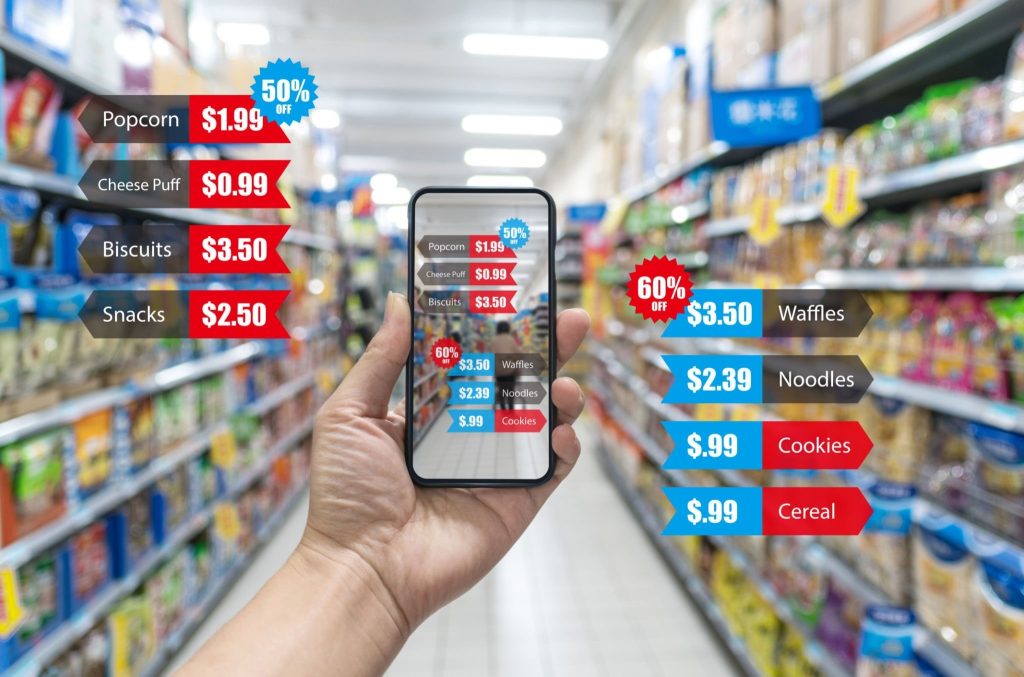
When it comes to selling your products or services, choosing the right sales channel can make all the difference. Whether a small business owner or a seasoned entrepreneur, selecting the right sales channel can help you reach your target audience, increase your revenue, and build a loyal customer base. But with so many sales channels available, from brick-and-mortar stores to online marketplaces, it can take time to decide which one is right for you. In this article, we’ll explore the different sales channels available and provide tips on choosing the best one for your business. So, whether you’re just starting or looking to expand your existing sales channels, read on to learn more about choosing the right sales channel for your business.
What is a Sales Channel?
A sales channel is a method by which a business sells its products or services to its customers. It can be a physical storefront, an online marketplace, or a combination of both. Sales channels are an essential part of any business’s marketing strategy, and choosing the right ones can significantly impact your sales revenue and customer base.
Why Choosing the Right Sales Channel Matters
Choosing the right sales channel matters because it can determine how successful your business is in reaching its target audience and selling its products or services. The wrong sales channel can lead to low sales revenue, unhappy customers, and a wasted investment of time and money.
On the other hand, the right sales channel can help your business grow and expand, increase its customer base, and improve its overall profitability. Choosing the right sales channel for your business is essential to ensure that you’re reaching the right customers in the right way.
Types of Sales Channels
Three main types of sales channels exist brick-and-mortar, online, and hybrid. Each type of sales channel has its pros and cons, and it’s essential to understand them to choose the right one for your business.

Brick-and-Mortar Sales Channels
A brick-and-mortar sales channel refers to a physical storefront where customers can walk in and buy products or services. Brick-and-mortar stores have been around for centuries and are still popular today, despite the rise of online shopping. One of the advantages of a brick-and-mortar store is that it allows customers to see and feel the products before buying them. This can be especially important for products that require hands-on experiences, such as clothing or furniture.
Another advantage of a brick-and-mortar store is that it allows face-to-face customer interaction. This can be an excellent opportunity to build customer relationships and provide a personalized shopping experience.
However, brick-and-mortar stores can be expensive to set up and maintain. Rent, utilities, and employee salaries can add up quickly, making it difficult for small businesses to compete with larger retailers.
Online Sales Channels

An online sales channel refers to a website or marketplace where customers can buy products or services. Online sales channels have become increasingly popular in recent years, thanks to the rise of e-commerce.
One of the advantages of an online sales channel is that it allows businesses to reach a global audience. With the right marketing strategy, businesses can attract customers worldwide, regardless of their physical location.
Another advantage of an online sales channel is that it can be much cheaper to set up and maintain than a brick-and-mortar store. A website can be created with relatively little investment, and many affordable e-commerce platforms are available to help businesses get started.
However, online sales channels can be challenging to stand out in a crowded market. With so many businesses competing for customers’ attention, attracting and retaining customers can take time and effort.

Hybrid Sales Channels
A hybrid sales channel refers to a combination of both brick-and-mortar and online sales channels. This sales channel type has become increasingly popular as businesses seek to reach customers through multiple channels.
One of the advantages of a hybrid sales channel is that it allows businesses to offer customers a choice of how they want to shop. Some customers prefer to shop in person, while others prefer to shop online. Businesses can cater to a broader range of customers by offering both options.
Another advantage of a hybrid sales channel is that it can help businesses reach customers who may not be comfortable shopping exclusively in one channel. For example, some customers prefer to see the products in person before buying them but prefer to complete the transaction online.
However, a hybrid sales channel can be more complex and challenging than a single-channel approach. Businesses must be prepared to invest in brick-and-mortar and online infrastructure, which can be expensive.
Pros and Cons of Each Sales Channel
Each type of sales channel has its pros and cons. Here’s a closer look at each type:
Brick-and-Mortar Sales Channels
Pros:
- Allows customers to see and feel the products before buying them
- Provides face-to-face interaction with customers
- Can be a great opportunity to build relationships with customers
Cons:
- Can be expensive to set up and maintain
- Limited geographical reach
- Can be challenging to compete with larger retailers
Online Sales Channels
Pros:
- Can reach a global audience
- Can be cheaper to set up and maintain than a brick-and-mortar store
- Can offer customers a convenient shopping experience
Cons:
- Can be challenging to stand out in a crowded market
- Limited opportunity for face-to-face interaction with customers
- Requires investment in online marketing strategies
Hybrid Sales Channels
Pros:
- Offers customers a choice of how they want to shop
- Can reach a broader range of customers
- Can provide a more personalized shopping experience
Cons:
- Can be more complex and challenging to manage than a single-channel approach
- Requires investment in both brick-and-mortar and online infrastructure
- Can be challenging to balance the needs of both channels
Identifying Your Target Audience and Their Preferred Sales Channels
One of the most critical factors in choosing the right sales channel is understanding your target audience and their preferred sales channels. By understanding your target audience’s shopping habits, you can choose the sales channels that will be most effective in reaching them.
For example, an online sales channel may be the best option if your target audience is primarily tech-savvy millennials. On the other hand, if your target audience is primarily older adults who prefer a hands-on shopping experience, a brick-and-mortar store may be a better choice.
By understanding your target audience’s preferences, you can tailor your sales channel strategy to meet and reach their needs more effectively.
Assessing Your Business Needs and Capabilities
Another critical factor in choosing the right sales channel is assessing your business needs and capabilities. Different sales channels require different levels of investment, infrastructure, and expertise.
For example, a brick-and-mortar store requires an investment in physical space, inventory, and employees. An online sales channel, on the other hand, requires investment in website development, online marketing, and e-commerce platforms.
Before choosing a sales channel, assessing your business’s needs and capabilities is essential to determine which channel is the best fit.
Evaluating the Competition and Their Sales Channels
Another important factor in choosing the right sales channel is evaluating the competition and their sales channels. By understanding what your competitors are doing, you can identify opportunities to differentiate yourself and reach customers in new ways.
For example, if your competitors primarily use brick-and-mortar sales channels, you can differentiate yourself by offering an online sales channel. Or, if your competitors primarily use online sales channels, you can differentiate yourself by offering a brick-and-mortar store.
By evaluating the competition and their sales channels, you can identify gaps in the market and opportunities to differentiate yourself and reach customers in new ways.
Creating a Sales Channel Strategy
Once you’ve identified your target audience, assessed your business needs and capabilities, and evaluated the competition, creating a sales channel strategy is time.
Your sales channel strategy should outline which channels you’ll use to reach your target audience, how you’ll use them, and what resources you’ll need to invest in them.
For example, if you’re targeting tech-savvy millennials, your sales channel strategy may include an e-commerce website, social media marketing, and mobile apps. On the other hand, if you’re targeting older adults who prefer a hands-on shopping experience, your sales channel strategy may include a brick-and-mortar store, direct mail marketing, and print ads.
Your sales channel strategy should be tailored to your business needs and target audience to ensure you’re reaching them effectively.
Implementing and Testing Your Chosen Sales Channel
Once you’ve created your sales channel strategy, it’s time to implement and test your chosen sales channel. This may involve setting up a physical storefront, developing an e-commerce website, or launching a social media marketing campaign.
It’s important to test your chosen sales channel to ensure that it effectively reaches your target audience and drives sales. This may involve conducting customer surveys, tracking sales revenue, and analyzing website traffic data.
Measuring and Adjusting Your Sales Channel Strategy
Finally, measuring and adjusting your sales channel strategy as needed is essential. This may involve tweaking your marketing campaigns, adjusting your pricing strategy, or investing in new sales channels.
By measuring and adjusting your sales channel strategy, you can ensure that you’re reaching your target audience effectively and driving sales revenue.

Conclusion
Choosing the right sales channel is essential to any business’s marketing strategy. By understanding your target audience’s preferences, assessing your business needs and capabilities, evaluating the competition, and creating a sales channel strategy, you can reach your customers effectively and drive sales revenue. Whether you choose a brick-and-mortar store, an online sales channel, or a hybrid approach, the key is to tailor your strategy to your specific business needs and target audience. With the right sales channel strategy, you can grow your business, increase your revenue, and build a loyal customer base.


